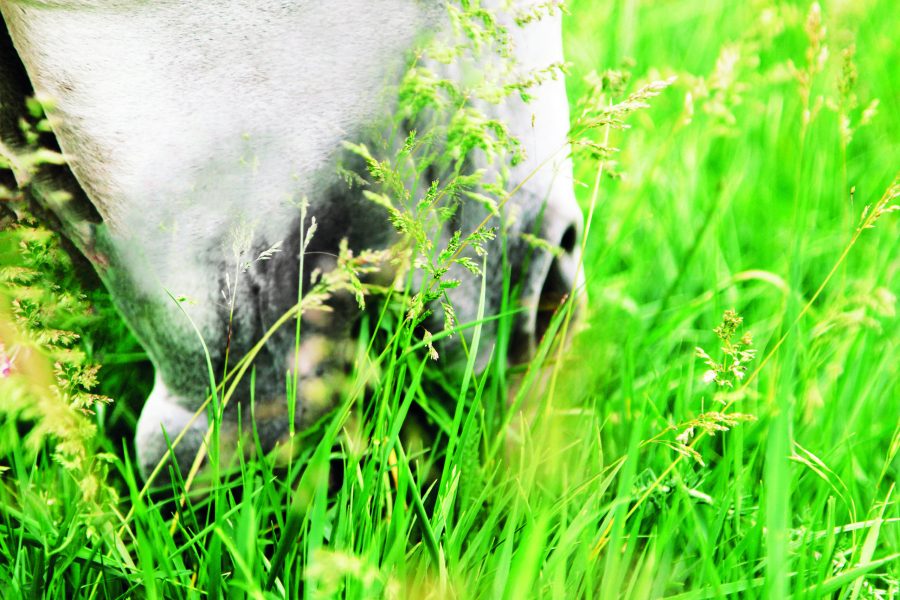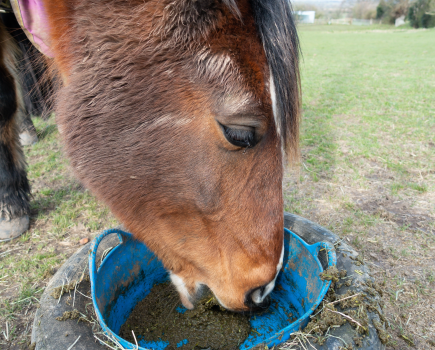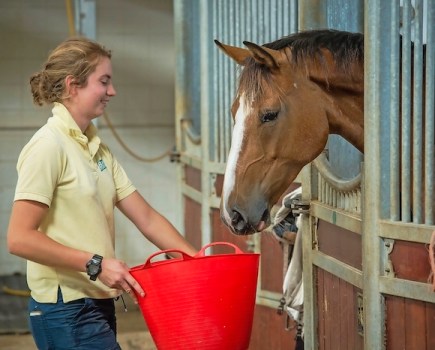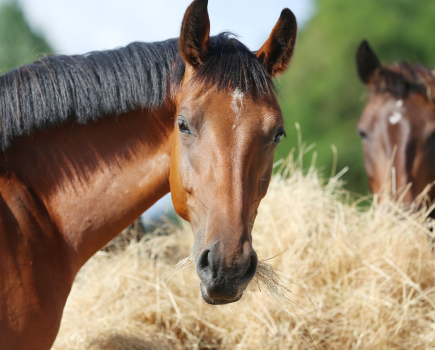All animals require fuel in the form of glucose so that their body’s cells can work. Various ways of acquiring this energy source have evolved, largely dictated by the food sources available in the animal’s environment. An important source of glucose for horses are the carbohydrates that they have adapted to eat, including naturally derived fibre, sugars and starches.
Sugars and starches are known as non-structural carbohydrates (NSCs), and these are broken down by enzymes and absorbed in the horse’s foregut (small intestine). Fibre is a structural carbohydrate and is digested by microorganisms (bacteria) primarily in the hindgut (large colon and caecum). Most NSCs are ultimately broken down into glucose as very simple sugar, which provides energy to the horse and can be stored in the liver and muscles as glycogen.
Where do sugars come from?
For horses, sugar exists in various forms in almost everything they eat – grass, hay and hard (compound) feeds. Plants themselves make sugars by a process called photosynthesis, which they use to produce fibre and grow.
The sugar content of grass has received a great deal of coverage in recent years, particularly in relation to equine obesity and laminitis. It has been known for some time that the sugar level in grass varies throughout the day depending on the amount of sunshine. Where there is more sunlight, photosynthesis increases and more sugar is produced, whereas on a cloudier day there will be less sugar in the grass. However, temperature, moisture levels, time of day, stage of growth and the type of grass all play a role too, so it’s not as simple as you might hope!
Similarly, for hay and haylage, the time of year that the cut was made play a significant role in the resulting sugar levels, but these can also vary across the same field, making batch testing difficult.
How do horses use sugars?
Just like us, horses need sugar to fuel their muscles and organs, including the brain. They evolved to graze rough tundra grass and scrublands which would have consisted of low-sugar plants, and they would have consumed this energy source steadily over the course of the day. As such, their bodies never needed to cope with high levels of sugar and they therefore don’t have the capacity to do so.
In the UK we have much richer pastures where the sugar content can exceed what the horse’s body can cope with. If a horse is working hard they will probably require more sugar in their diet to provide energy, but this needs to be fed in a controlled manner. Conversely, a horse doing low-level or no work can find the pastures in the UK too high in sugar to be fed in an uncontrolled manner.
How do I know if they’re getting too much sugar?
Horses have evolved to live on grass, which provides sugar as its primary fuel and fibre that is essential for gut health. Horses are well adapted to digesting and using this source of sugar and a healthy animal receiving sufficient exercise with a good body condition score (3/5) should cope with the sugar they receive from their grazing and roughage.
However, the majority of horses and ponies do need their sugar intake to be restricted, usually because they are overweight or obese, not doing enough exercise to utilise the energy they are receiving from the grass, and/ or have been diagnosed with a health condition, such as equine metabolic syndrome (EMS) or laminitis.
When a horse receives too much sugar in their diet, the sugar will be stored in their liver and muscles as glycogen with the help of the hormone insulin. If a horse is overweight their fat cells are constantly producing biochemicals that disrupt the insulin system, resulting in what’s known as ‘insulin dysregulation’. With the insulin system not working properly, the horse is unable to cope with high sugar levels and especially sudden spikes of sugar in their bloodstream.
These episodes of high blood sugar cause damage to their body, most notably in the laminar tissue of the feet, resulting in laminitis.
Image copyright: Shutterstock









